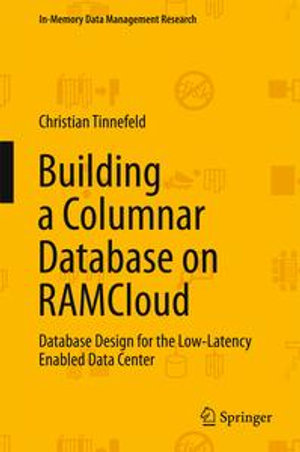
Building a Columnar Database on RAMCloud
Database Design for the Low-Latency Enabled Data Center
eText | 7 July 2015
At a Glance
eText
$129.00
or
Instant online reading in your Booktopia eTextbook Library *
Why choose an eTextbook?
Instant Access *
Purchase and read your book immediately
Read Aloud
Listen and follow along as Bookshelf reads to you
Study Tools
Built-in study tools like highlights and more
* eTextbooks are not downloadable to your eReader or an app and can be accessed via web browsers only. You must be connected to the internet and have no technical issues with your device or browser that could prevent the eTextbook from operating.
ISBN: 9783319207117
ISBN-10: 3319207113
Series: In-Memory Data Management Research
Published: 7th July 2015
Format: PDF
Language: English
Publisher: Springer Nature
You Can Find This eBook In
This product is categorised by
- Non-FictionComputing & I.T.Business Applications
- Non-FictionBusiness & ManagementBusiness Mathematics & Systems
- Non-FictionComputing & I.T.Computer HardwareStorage Media & Peripherals
- Non-FictionComputing & I.T.DatabasesData Mining
- Non-FictionComputing & I.T.Computer Science
- Non-FictionComputing & I.T.Databases
- Non-FictionComputing & I.T.Computer Hardware
























